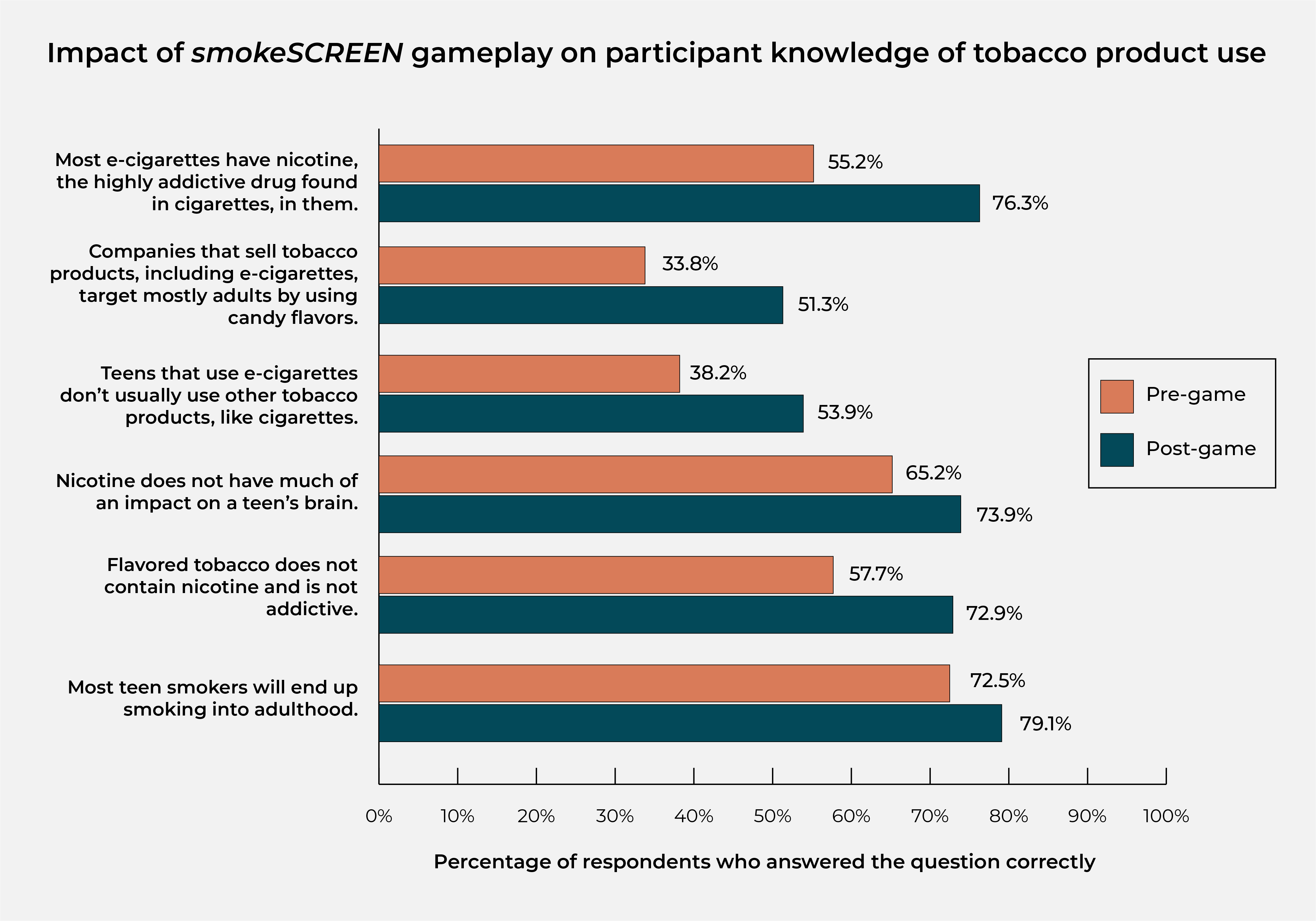Today’s review is part of our month-long Special Series on Community Approaches to Addiction. During this Special Series, The BASIS features innovative, community-based addiction interventions that are delivered outside the doctor’s office.
Ninety percent of teenagers in the United States play videogames, and videogame interventions appear to promote health behavior change and associated outcomes (e.g., knowledge, risk perception, and self-efficacy) in adolescents. SmokeSCREEN is a web-based interactive videogame designed to bolster knowledge of e-cigarettes and vaping and build peer pressure refusal skills in adolescents. This is important because although the long-term health effects of e-cigarettes are unknown, their use among adolescents is concerning due to the nicotine they contain, which can harm brain development, and because youth who use e-cigarettes as their first tobacco product may be at greater risk of initiating cigarette use. This week, as part of our Special Series on Community Approaches to Addiction, ASHES reviews an investigation by Dr. Kimberly Hieftje and colleagues into the effectiveness of smokeSCREEN on developing healthy beliefs and knowledge regarding e-cigarette use among adolescents.
What was the research question?
Does smokeSCREEN improve adolescents’ beliefs and knowledge towards vaping and e-cigarette use?
What did the researchers do?
The researchers recruited 560 participants between the ages of 10 and 13 who were enrolled in school or afterschool youth programs. Participants played smokeSCREEN during school and afterschool programs. Participants completed a pre- and post-survey with eight belief-based questions and six knowledge-based questions about tobacco product use. Questions were adapted from the 2014 National Youth Tobacco Survey. The researchers used McNemar’s test to compare responses and used Generalized Estimating Equations to understand whether knowledge and beliefs are associated with gender and age. The participants were also asked five post-survey questions about their gameplay experience.
What did they find?
On average, participants played smokeSCREEN for 88 minutes. There were positive changes in seven of the eight belief-based questions and all six of the knowledge questions from pre- to post-survey (see figure). Older participants were more knowledgeable about e-cigarettes than younger participants, such as knowing that e-cigarettes contain nicotine and that tobacco product companies target adults by using candy flavors. The length of gameplay time was not associated with beliefs or knowledge. Most participants felt favorably towards their gameplay experience.

Figure. The percentage of respondents who answered knowledge-related questions correctly, before playing smokeSCREEN and after playing smokeSCREEN. Click image to enlarge.
Why do these findings matter?
These findings demonstrate that web-based videogame prevention interventions are effective in educating adolescents about tobacco product use, which may lead to eventual behavior change. This intervention was regarded as favorable among the majority of participants; therefore, web-based videogame interventions may be a good fit for adolescents. A future step will be to tailor the game to more specific populations, such as adolescents who haven’t started using e-cigarettes yet versus those who have.
Every study has limitations. What are the limitations of this study?
One limitation of this study is the lack of a control group for comparison; the participants might have been learning about tobacco products from other sources, and that might have explained their increased knowledge. Another limitation is the fact that participants were only recruited from four states; participants may not be representative of all adolescents in the United States and the findings may not be generalizable. Lastly, the findings may be impacted by attrition bias and the sample size was reduced because 33% of the participants did not complete the post-survey.
For more information:
SmokeFreeTeen offers tools and resources for teenagers about quitting and maintaining abstinence from tobacco use. The Centers for Disease Control and Prevention offers information and tips about cigarettes and how to quit. For more information about addiction, visit our Addiction Resources page.
— Kira Landauer, MPH
What do you think? Please use the comment link below to provide feedback on this article.




